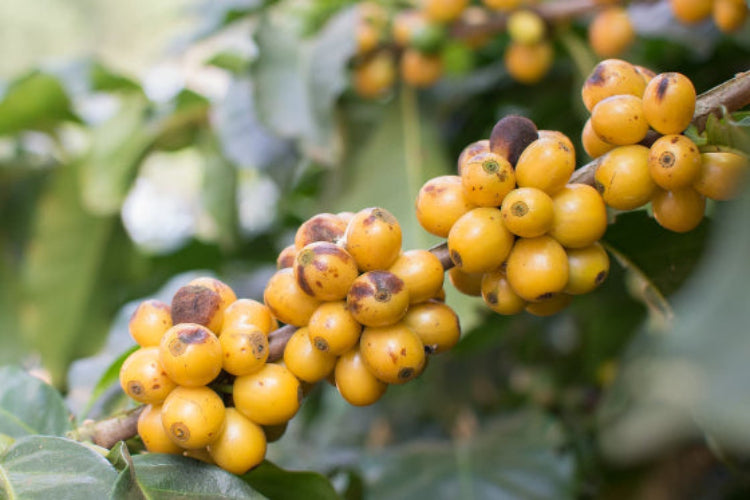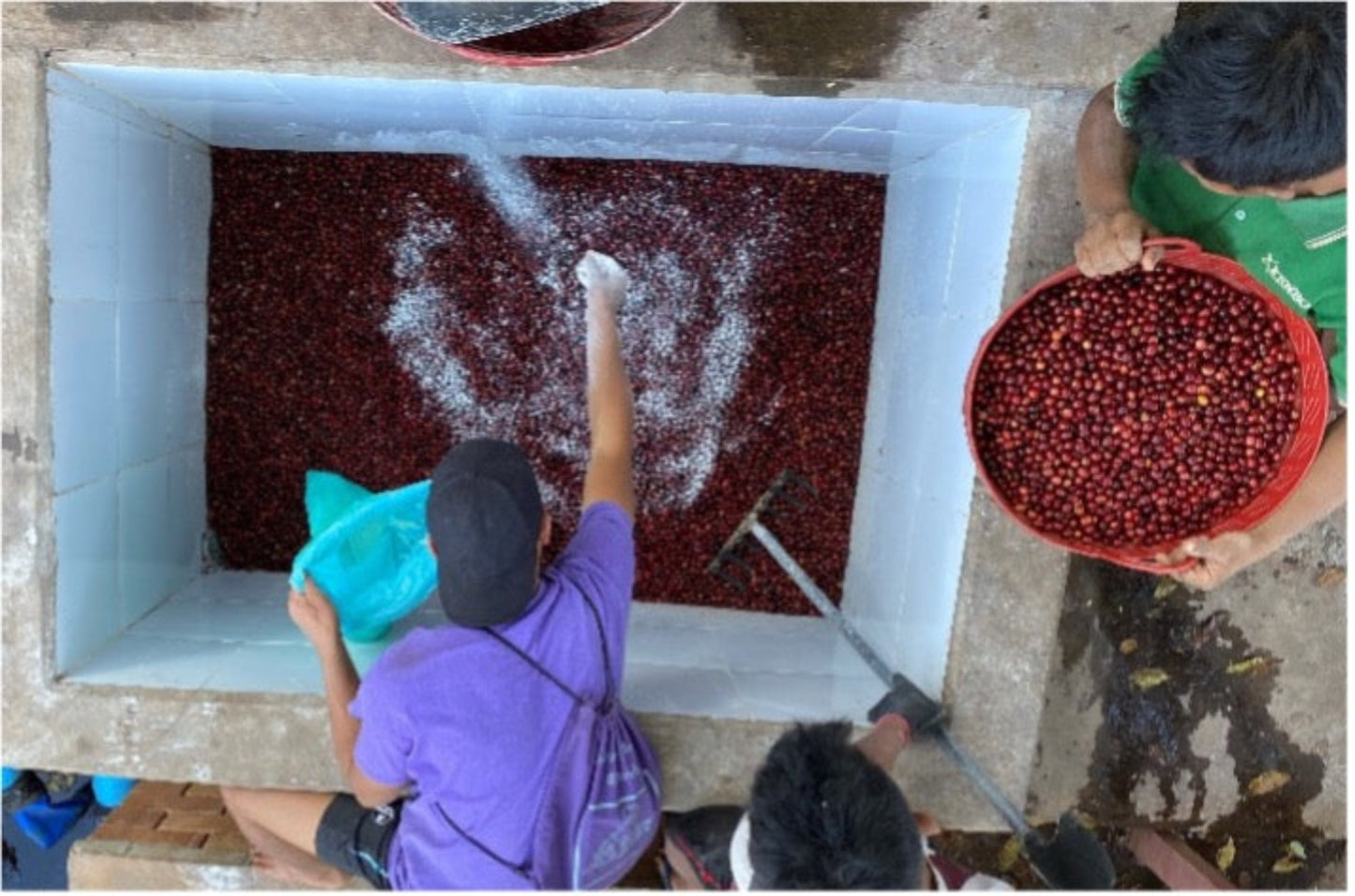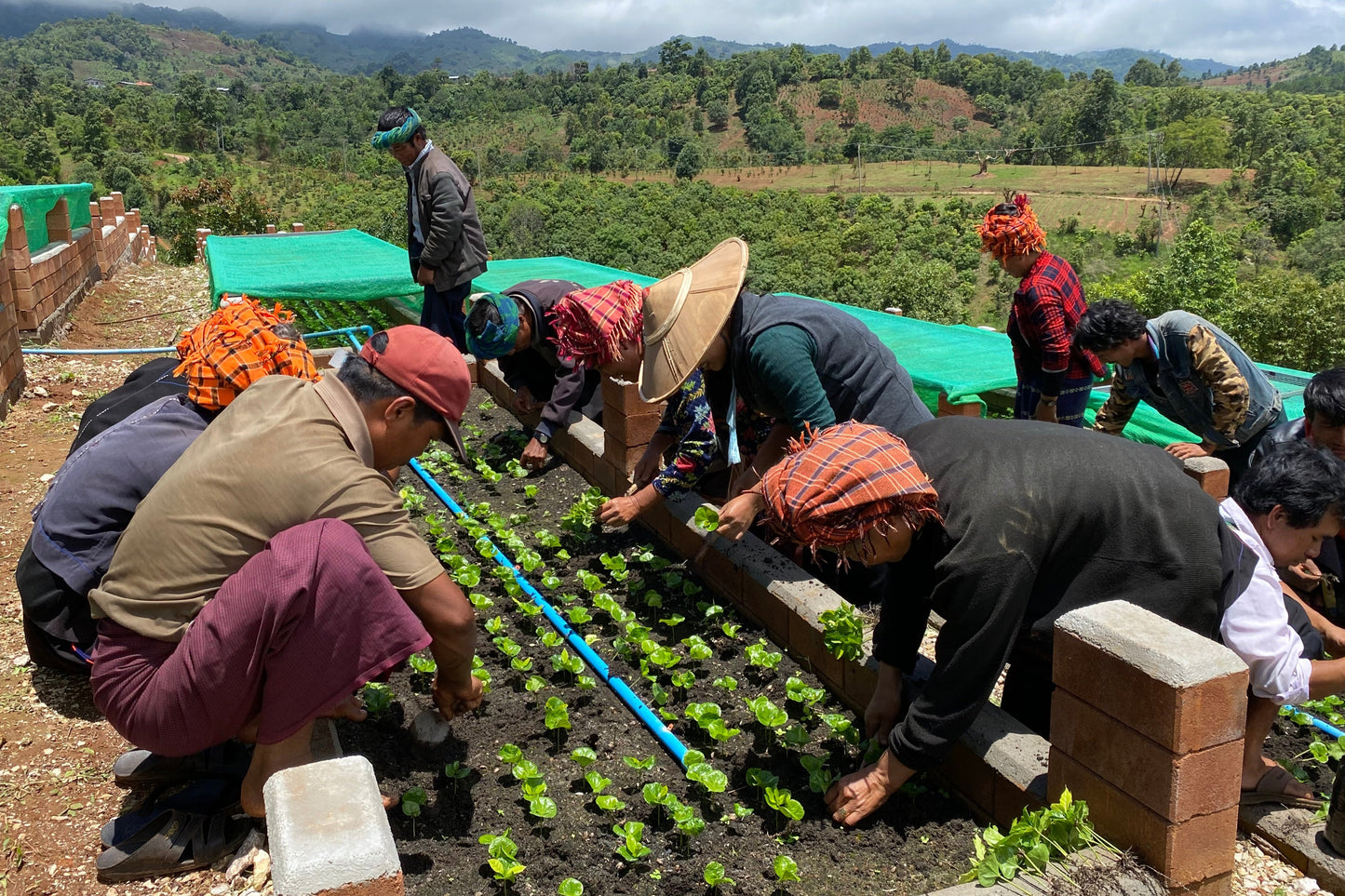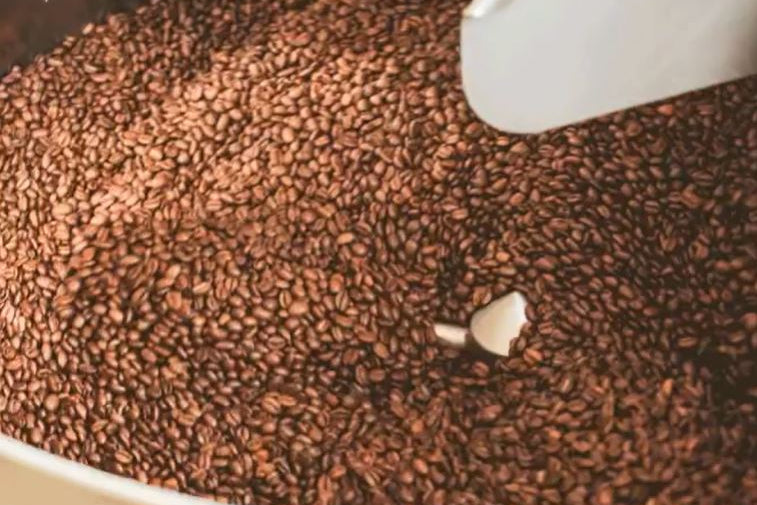ORIGIN SERIES: BRAZIL
Origin Series delves into coffee growing regions around the world and turns you into a knowledgeable coffee snob.
A juicy and pleasantly surprising acidity Chocolatey, tropical and displaying delicate stone fruit flavours and aromatics, it's the perfect synthesis of a Brazilian grown, Ethiopian native variety. Runner up of the 2025 New Zealand Barista Championship Auckland regional.
BRAZIL SANTUARIO SUL
Origin: Brazil, Carmo de Minas
Farm: Fazenda Santuario Sul
Variety: Yirgacheffe
Processing: Natural
Altitude: 1100-1300 masl
Flavour notes: 70% dark chocolate, fresh apricot, freeze-dried pineapple
Recommended use: Espresso
Brazil is the undisputed giant of the coffee world, producing about one-third of the world’s coffee supply. While it has long been associated with high-volume commodity coffee, Brazil has also become a powerhouse in specialty coffee. With its diverse climates, rich soil, and innovative farming techniques, the country continues to push the boundaries of quality and flavour. Brazilian coffee farmers have adapted traditional farming methods to include new technologies, ensuring a consistent and high-quality output for both local and international markets.
Discover more about Brazil
Coffee was first introduced to Brazil in the 18th century by Francisco de Melo Palheta, a Portuguese officer who
allegedly smuggled coffee seeds from French Guiana. He is said to have charmed the governor’s wife, who secretly gifted him coffee seeds. By the 19th century, coffee had become Brazil’s most important export, fuelling economic growth and transforming the country into the world’s largest coffee producer—a title it still holds today. The expansion of coffee cultivation led to the establishment of large plantations, known as "fazendas," and the reliance on enslaved labour until its abolition in 1888. Over the years, Brazil’s coffee industry has evolved, with a strong focus on mechanization and innovation, allowing it to produce high-quality coffee at scale while remaining competitive in the global market.
Coffee was first introduced to Brazil in the 18th century by Francisco de Melo Palheta, a Portuguese officer who
allegedly smuggled coffee seeds from French Guiana. He is said to have charmed the governor’s wife, who secretly gifted him coffee seeds. By the 19th century, coffee had become Brazil’s most important export, fuelling economic growth and transforming the country into the world’s largest coffee producer—a title it still holds today. The expansion of coffee cultivation led to the establishment of large plantations, known as "fazendas," and the reliance on enslaved labour until its abolition in 1888. Over the years, Brazil’s coffee industry has evolved, with a strong focus on mechanization and innovation, allowing it to produce high-quality coffee at scale while remaining competitive in the global market.
Brazil’s vast landscape offers a variety of
microclimates and altitudes that contribute to diverse coffee profiles. Some of the most renowned coffee-producing regions include:
- Minas Gerais – The largest coffee-producing state, known for regions like Cerrado, Sul de Minas, and Chapada de Minas. Coffees here are often full-bodied with chocolate and nutty notes. The region's high-altitude farms and mild climate create optimal growing conditions for specialty coffee, resulting in a balanced cup with complex flavours.
- São Paulo – Home to the famous Mogiana region, which produces smooth and well-balanced coffees with bright acidity. The combination of rich volcanic soil and a temperate climate ensures high-quality Arabica beans with a pronounced sweetness.
- Espírito Santo – Known for growing both Arabica and Robusta, with its high-altitude areas producing specialty-grade Arabica with fruity and floral characteristics. The challenging topography and small farm sizes mean that most coffee is harvested by hand, allowing for precise cherry selection.
- Bahia – A relatively newer coffee region with a focus on precision farming, yielding bright, clean, and complex specialty coffees. Advanced irrigation systems and scientific farming methods help maintain consistent yields and high-quality beans.
- Paraná – Historically an important coffee-growing region, it continues to produce high-quality Arabica, particularly in the north of the state. Due to occasional frost risks, farmers in Paraná have developed resilient varieties that can withstand harsh weather conditions while maintaining excellent flavour profiles.
Brazil’s vast landscape offers a variety of
microclimates and altitudes that contribute to diverse coffee profiles. Some of the most renowned coffee-producing regions include:
- Minas Gerais – The largest coffee-producing state, known for regions like Cerrado, Sul de Minas, and Chapada de Minas. Coffees here are often full-bodied with chocolate and nutty notes. The region's high-altitude farms and mild climate create optimal growing conditions for specialty coffee, resulting in a balanced cup with complex flavours.
- São Paulo – Home to the famous Mogiana region, which produces smooth and well-balanced coffees with bright acidity. The combination of rich volcanic soil and a temperate climate ensures high-quality Arabica beans with a pronounced sweetness.
- Espírito Santo – Known for growing both Arabica and Robusta, with its high-altitude areas producing specialty-grade Arabica with fruity and floral characteristics. The challenging topography and small farm sizes mean that most coffee is harvested by hand, allowing for precise cherry selection.
- Bahia – A relatively newer coffee region with a focus on precision farming, yielding bright, clean, and complex specialty coffees. Advanced irrigation systems and scientific farming methods help maintain consistent yields and high-quality beans.
- Paraná – Historically an important coffee-growing region, it continues to produce high-quality Arabica, particularly in the north of the state. Due to occasional frost risks, farmers in Paraná have developed resilient varieties that can withstand harsh weather conditions while maintaining excellent flavour profiles.
Brazil primarily cultivates Arabica coffee, with popular varieties including Bourbon, Catuai, Mundo Novo, and Yellow Icatu. These varieties are chosen for their adaptability, productivity, and unique
flavour profiles. The selection of coffee varieties plays a crucial role in determining cup characteristics, as some are more suited to specific altitudes and soil compositions.
Processing methods in Brazil vary widely, but the most common include:
- Natural (Dry) Process – Coffee cherries are dried in the sun with the fruit still intact, resulting in sweet, full-bodied coffees with fruity and chocolatey notes. This method is widely used in Brazil due to its warm, dry climate, which allows for efficient drying without the need for extensive infrastructure.
- Pulped Natural (Honey) Process – The skin is removed, but some mucilage is left on the bean before drying, producing coffees with balanced acidity and enhanced sweetness. This method bridges the gap between the washed and natural processes, offering complexity with minimal risk of over-fermentation.
- Washed (Wet) Process – Less common in Brazil, but used to produce clean, bright, and complex specialty coffees. While more labour-intensive and water-dependent, the washed process enhances clarity and acidity in the cup, making it highly desirable for certain specialty lots.
Brazil primarily cultivates Arabica coffee, with popular varieties including Bourbon, Catuai, Mundo Novo, and Yellow Icatu. These varieties are chosen for their adaptability, productivity, and unique
flavour profiles. The selection of coffee varieties plays a crucial role in determining cup characteristics, as some are more suited to specific altitudes and soil compositions.
Processing methods in Brazil vary widely, but the most common include:
- Natural (Dry) Process – Coffee cherries are dried in the sun with the fruit still intact, resulting in sweet, full-bodied coffees with fruity and chocolatey notes. This method is widely used in Brazil due to its warm, dry climate, which allows for efficient drying without the need for extensive infrastructure.
- Pulped Natural (Honey) Process – The skin is removed, but some mucilage is left on the bean before drying, producing coffees with balanced acidity and enhanced sweetness. This method bridges the gap between the washed and natural processes, offering complexity with minimal risk of over-fermentation.
- Washed (Wet) Process – Less common in Brazil, but used to produce clean, bright, and complex specialty coffees. While more labour-intensive and water-dependent, the washed process enhances clarity and acidity in the cup, making it highly desirable for certain specialty lots.
Brazilian specialty coffee is known for its smooth, low-acid, and full-bodied profile. Common flavour notes include chocolate, nuts (such as almond and hazelnut), caramel, and dried fruits. Certain high-altitude or experimental lots may showcase more vibrant fruit and floral notes, but the hallmark of Brazilian coffee remains its rich, comforting sweetness and well-rounded balance. Some coffees from Brazil also exhibit subtle spice notes, making them excellent choices for espresso blends and single-origin offerings. The diversity in processing methods and growing conditions allows for a wide range of flavour expressions, from classic, nutty profiles to more complex and exotic flavours.
Brazilian specialty coffee is known for its smooth, low-acid, and full-bodied profile. Common flavour notes include chocolate, nuts (such as almond and hazelnut), caramel, and dried fruits. Certain high-altitude or experimental lots may showcase more vibrant fruit and floral notes, but the hallmark of Brazilian coffee remains its rich, comforting sweetness and well-rounded balance. Some coffees from Brazil also exhibit subtle spice notes, making them excellent choices for espresso blends and single-origin offerings. The diversity in processing methods and growing conditions allows for a wide range of flavour expressions, from classic, nutty profiles to more complex and exotic flavours.
- Brazil was the first country to mass-mechanize coffee harvesting, allowing for consistent production at a large scale. Unlike many other coffee-growing nations, Brazil’s relatively flat terrain makes mechanization more feasible.
- The country’s unique topography allows for both hand-picked and machine-harvested coffee, depending on the region. This flexibility ensures efficiency while maintaining quality control.
- The world’s first carbon-neutral coffee farm, Daterra, is based in Brazil, highlighting the country’s efforts in sustainable coffee production. Daterra’s innovative farming practices include reforestation projects and water conservation initiatives.
- Some Brazilian farmers are experimenting with fermentation techniques and anaerobic processing
to create exotic and unique flavour profiles. These methods enhance complexity in the cup, adding layers of fruitiness and acidity that are not traditionally associated with Brazilian coffee.
- Brazil was the first country to mass-mechanize coffee harvesting, allowing for consistent production at a large scale. Unlike many other coffee-growing nations, Brazil’s relatively flat terrain makes mechanization more feasible.
- The country’s unique topography allows for both hand-picked and machine-harvested coffee, depending on the region. This flexibility ensures efficiency while maintaining quality control.
- The world’s first carbon-neutral coffee farm, Daterra, is based in Brazil, highlighting the country’s efforts in sustainable coffee production. Daterra’s innovative farming practices include reforestation projects and water conservation initiatives.
- Some Brazilian farmers are experimenting with fermentation techniques and anaerobic processing
to create exotic and unique flavour profiles. These methods enhance complexity in the cup, adding layers of fruitiness and acidity that are not traditionally associated with Brazilian coffee.
Stay tuned for more stories from our Origin Series as we continue to explore the diverse world of specialty coffee.
From the blog
Read the label is a series that breaks down the lingo & helps you choose the coffee that's right for...
ORIGIN SERIES: MYANMAR
We journey to the misty highlands of Myanmar, a Southeast Asian country whose specialty coffee scene is still emerging but...
Blend vs Single origins: what's the difference?
Blends bring balance. Singles bring character. Discover how both fit into your coffee routine — and why neither one has...








